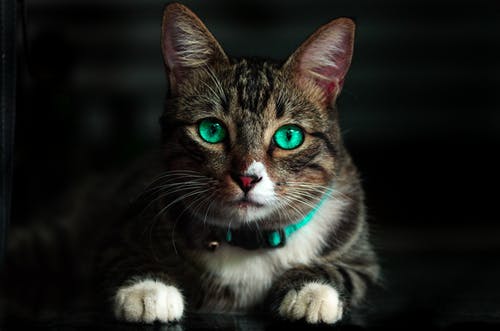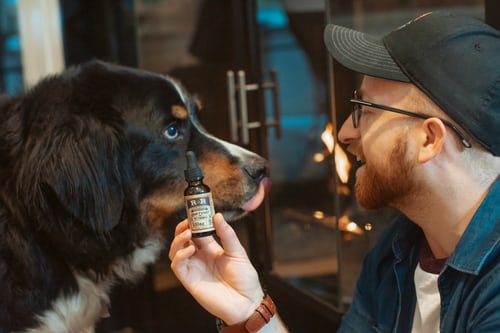Cat hairballs are natural to felines, but they could spell disaster for your cat.
Does your cat get hairballs?
Of course they do.
Every cat – even hairless cats, believe it or not – will acquire and produce hairballs or trichobezoars.
They’re a natural part of a cat’s bodily functions, but they can pose a serious health risk if you don’t know the early signs of trouble.
When you’re caring for your cats, it’s important to know about all the signals they send – the good news and the bad. If you’re able to communicate with your furry feline companion or have someone in your life who can, there will be less guessing and more knowing about their true state of being. Otherwise, you could find yourself chasing your tail on expensive guesswork trying to figure out what’s going on!
Here are some signs of cat hairballs to watch out for, and ways you can safeguard your feline friend’s health.
What is a hairball?
The name is actually deceiving. It’s not just hair, and it’s not shaped like a ball.
You probably haven’t examined them all that closely…and that’s understandable. Chances are that Felix waited until you had company to begin his ritual retching, hacking and spewing in the corner of the room…only to shoot you a dismissive look when he’s finished. Your focus is likely “clean up in aisle nine” before it stains the carpet, not dissecting his masterpiece.
Cat hairballs aren’t ball-shaped at all – they’re usually tubular like a cat’s digestive tract, and they often end up in a cat’s normal feces. They’re a mixture of hair, undigested food and gastric juices like bile, and the contents can stain fabric and be very slippery if deposited on a smooth floor.
The cosmetic damage and potential slipping hazards aren’t your greatest concern, though. A cat should only take a minute or so to disgorge a hairball, and they shouldn’t be a daily occurrence.
If the retching goes on for minutes on end and with great frequency – more often than every week or two – it’s a signal that something’s not right with your kitty’s insides.
Causes and symptoms of health problems from cat hairballs.
Hairballs are a natural part of a cat’s bodily functions and, yes, hairless cats develop hairballs, too. Veterinarians have learned that they’ll seek out other furry friends to groom, suggesting that passing hairballs is a completely normal part of overall health.
Long-haired cats, cats that live indoors and outside, and that have changes in their coats with the changing seasons, are much more susceptible. Kittens aren’t very efficient groomers so it’s unlikely they’ll form hairballs at all in the early going.
Daily grooming is part of a cleaning ritual for felines, who are normally fastidious about hygiene.
Cats can spend a whopping 15-50% of their day ‘combing their hair’. Their sandpaper tongue, lined with backward-facing hooks called papillae, are very efficient at removing loose hair while aiding the spread of natural oils on the cat’s fur.
Excessive grooming will lead to an unhealthy build-up in their digestive system and lead to partial or full blockages, though. And that can be an indication of emotional distress. It can also be a sign of parasites, allergies, or a skin condition that’s causing anxiety or obsessive compulsive disorders.
If you know how to have a conversation with your cat, you’ll learn what’s happening in their mind and body. If you don’t? Don’t just guess. Consult a veterinarian or other expert if your cat’s behavior seems unusual or excessive. For example, if they’re grooming themselves until their skin is raw and the fur is disappearing.
When is it time to see a vet?
Obsessive grooming can indicate a serious illness…and even if you’re not communicating with your furry friend, you’ll get physical indications of trouble that include a loss of appetite, vomiting, diarrhea, constipation, and lethargy.
The litterbox can be a good source of information even if you don’t notice a shift in your cat’s other patterns.
Don’t ignore the symptoms, especially if they come and go.
If you catch this in time, you have a chance to fix a minor problem before it becomes a major one.

Your vet will want to take an abdominal and/or chest x-ray or perform an ultrasound to assess your cat’s insides and find the source of the blockage. Minor cases will require liquid therapy and special laxatives to clear the cat’s system.
In extremely rare cases surgery will be required to remove the blockage and repair the damage…don’t worry too much about this, though, it doesn’t happen that often.
An ounce of prevention is worth a pound of purr.
The vast majority of cat hairballs will never lead to intestinal blockages – your cat will happily, and dramatically eject the excess hair every week or two…in a closet, on the sofa, under your bed.
You can help your cat with their quest for a well-groomed coat by using a shedding glove like this one (or this one is cool too!), or a specially designed kitty shedding brush which serves two purposes: helping thin loose hair and also spending time pampering your pet and growing the bond between you two.
Using petroleum based products like Laxatone isn’t a good idea. Mineral oil coats the inside of the digestive tract which helps the hairball pass through, but it also interferes with the digestive system’s ability to process and assimilate nutrients. Petroleum based products are not healthy and can cause toxicity over time.
A better option is to offer a natural oil, like extra virgin olive oil, sesame oil, ghee or coconut oil.
A good pet owner will always pay attention to their cat’s rhythms and quirks, even though their cats can seem indifferent to their human’s habits!
Your pet is completely reliant on you for their well-being…emotionally and physically. It’s your responsibility to understand their needs, and provide the help they can’t get for themselves.
Download my FREE Ebook Hidden Secrets to Communicating with Cats – just click on the picture below!
Did you enjoy this article on cat hairballs? Cat lovers also enjoyed these popular posts:
Why You Should Not Own a Cat and Dog Together
Cat Gingivitis – Two Natural Ways to Resolve it
Five Benefits of Animal Communication
. . .
Affiliate Disclaimer: This post contains affiliate information which means that I’ll earn a small commission if you purchase at no extra cost to you.








Leave a Reply